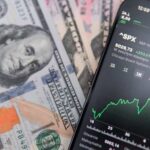Despite starting 2022 on the back foot, stocks have recovered some ground over the past couple of weeks as inflation readings seem to have peaked and investors’ confidence is returning.
As of August 10, 80% of the S&P 500’s, 500 components are trading above their 50-day Simple Moving Average (SMA), higher than it has been over the past seven months, with the S&P 500 currently sitting at 4,210.24.
Market technicians often use moving averages to help them understand an asset’s short-term and long-term momentum. Historically a solid trend predictor for price movements and determining where support and resistance levels are located.
Chief Market Strategist of Carson Group LLC took to Twitter to explain the strength in the S&P and what it means for the markets historically.
“More than 80% of the stocks in the S&P 500 are now above their 50-day moving average. Historically, thrusts like this tend to suggest continued strength (unless they happen in front of a 100 year pandemic). Will this time be different? I say no, but what do you think?”
Such spikes often indicate a healthy market but can also trigger a short-term sell-off for investors looking to move their funds into other assets.
Peak inflation
The Consumer Price Index (CPI) released on August 10 showed that inflation could have peaked; furthermore, with the US passing the Inflation reduction act, stocks have experienced a jump in the last trading sessions, possibly indicating that more gains are in store.
Historically, peak inflation often indicated a time to start buying stocks and for investors to flock back into markets. Andreas Steno Larsen, a macro traded host, and editor at Real Vision, tweeted a chart showing that buying ensued once inflation peaked in 1974 and 1975.
“In 1974-1975, the peak in inflation was THE buy signal for equities. History doesn’t repeat itself, but it often rhymes.”
Fear and greed index
The fear and greed index, developed by CNN Money, indicates which of the primary emotions influences the markets, often used to gauge whether the stock market is reasonably priced. One month ago, the index sat at 27 or ‘fear,’ indicating that investors were unwilling to partake in the market action.
Meanwhile, the index currently reads 52 or ‘neutral,’ moving closer to ‘greed,’ indicating that investors are possibly more bullish on stocks than they were just a month ago.
Moreover, the various technical indicators and historical analysis of the stock markets show that markets could be gearing for a move upwards.
In essence, market participants could start looking at their watchlists and finding their highest conviction plays and start ‘nibbling,’ while keeping an eye on the broader market, technical indicators, and global developments to gauge how aggressive they can be with their moves.
Buy stocks now with Interactive Brokers – the most advanced investment platform
Disclaimer: The content on this site should not be considered investment advice. Investing is speculative. When investing, your capital is at risk.








